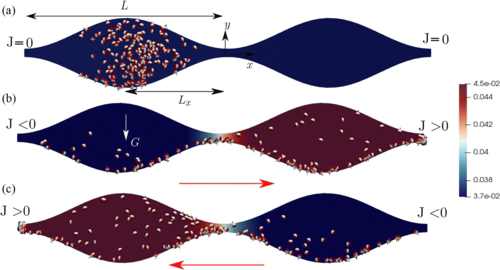<< ️Local rearrangements are the elements of plastic deformation in an amorphous solid. In oscillatory shear, they can switch reversibly between two distinct configurations. While these repeating relaxations are typically considered in the limit of slow driving, their dynamics is less well understood. >>
<< ️(AA) perform experiments on a colloidal amorphous solid at an oil-water interface. The rearrangement timescales we observe span at least 1 decade, with no apparent upper bound. As frequency is increased, individual rearrangements appear faster and more hysteretic, but may disappear entirely above a crossover frequency -- suggesting that in practical experiments, the slowest rearrangements may be latent. (They) show how to find the effective potential energy that reproduces a particle's frequency-dependent motion. In rare cases, this potential energy has only one minimum. >>
Zhicheng Wang, Nathan C. Keim. Dynamics of Reversible Plasticity in an Amorphous Solid. arXiv: 2512.17816v1 [cond-mat.soft]. Dec 19, 2025.
Also: colloids, transition, in https://www.inkgmr.net/kwrds.html
Keywords: gst, colloids, colloidal amorphous solids, repulsive particles, reversible plasticity, plastic rearrangements, oscillatory shear, bistable rearrangements, repeating relaxations, transitions, logarithmic aging, silly putty dynamics.







